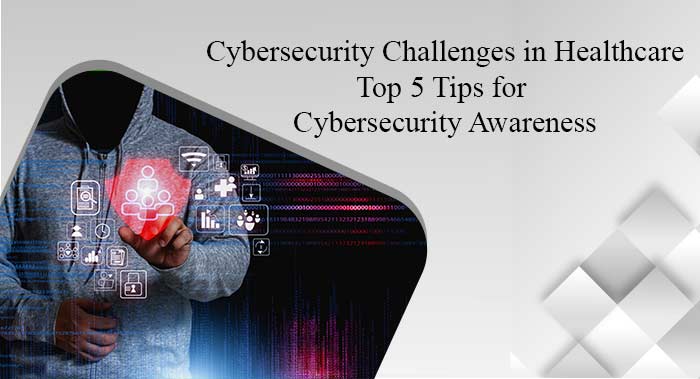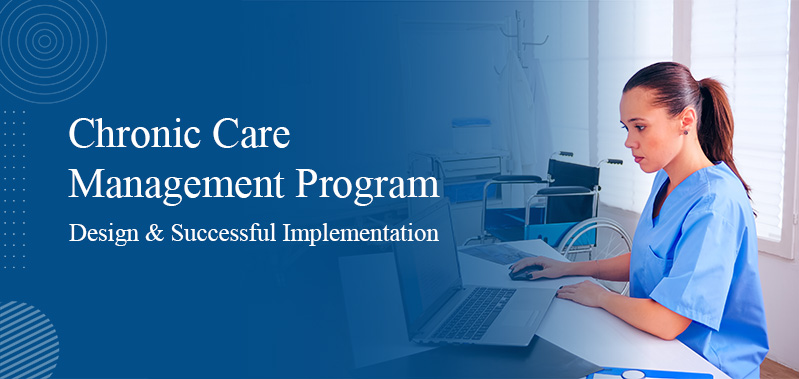
Cybersecurity Challenges in Healthcare: Top 5 Tips for Cybersecurity Awareness
The healthcare industry becomes the top target of cybercriminals, accounting for 17% of all data breaches between 2020 and 2021, the highest among any industry. Cybersecurity threats have no signs of slowing down as in March 2023, the Department of Health and Human Services’ Office for Civil Rights (OCR) reported 63 data breaches involving over 500 healthcare records. This marks an alarming increase of nearly 47% compared to February, nearly 7% higher than the 12-month average, and a staggering 40% rise from March 2022.
A better understanding of cybersecurity challenges in healthcare is necessary to appropriately respond to the threats and safeguard their operations. In this post, we’ll cover the top tips for cybersecurity awareness that will help hospitals and other healthcare entities improve their security posture.
Biggest Cybersecurity Concerns in Healthcare
Protected health information (PHI) is a prime target for cyber attackers due to its high value to both healthcare institutions and patients. A single PHI record can fetch up to $1,000 on the dark web, making breaches lucrative for cybercriminals, especially considering the average practice holds over 10,000 PHI records.
Furthermore, healthcare organizations store a plethora of personally identifiable information (PII) for patients, including names, addresses, social security numbers, and financial details. Stolen financial information, such as credit card details, can sell for up to $120 on average. Verizon's 2023 Data Breach Investigations Report (DBIR) indicates that personal data like PII constituted 67% of compromised data in the healthcare industry over the past year, while medical data accounted for another 54%.
In addition to personal and medical records, research hospitals possess valuable intellectual property (IP) sought after by cybercriminals for ransomware attacks. State-sponsored hackers, backed by foreign governments, are also interested in healthcare IP for various purposes, including financial gain and accessing critical systems.
The frequency of cyberattacks in the healthcare sector has risen, exacerbated by the distractions and shifts caused by the COVID-19 pandemic. Challenges such as decreased security awareness, uncoordinated incident responses, and insecure remote work environments have contributed to successful attacks. Confirmed data breaches have remained steady since 2020, comprising 24% of all breach types, indicating a persistent threat to healthcare organizations, particularly when coupled with the rising frequency of ransomware attacks.
Top 5 Tips to Overcome the Cybersecurity Challenges in Healthcare
Indeed the cyber threats are not in the control of healthcare organizations, but there’s room for improvement. There are many ways through which healthcare organizations can improve their security and some of them are as follows:
Identify Security Loopholes
Protecting organizations from prevalent cyber threats in healthcare starts with understanding attackers' tactics. Leaders must educate staff on basic phishing indicators: poor grammar, generic greetings, and suspicious sender addresses. Attackers often mimic legitimate businesses, using email addresses resembling coworkers' or bosses' with slight alterations. Employees should be wary of unsolicited emails prompting downloads or clicks on suspicious links. By fostering awareness and vigilance, organizations can mitigate the risks associated with phishing attacks.
Conduct Robust Risk Assessments
Improving healthcare cybersecurity involves hospitals identifying and rectifying weaknesses. Beginning with awareness, hospitals should initiate cybersecurity efforts with a thorough assessment. HIPAA mandates regular risk assessments, making them both essential and obligatory. While yearly assessments suffice, conducting them quarterly or after significant market shifts enhances security. These assessments comprehensively evaluate potential risks, providing insight into current vulnerabilities and actionable solutions. Recognizing that every hospital faces some level of risk, the assessment enables an understanding of the current status and empowers proactive measures. By prioritizing risk assessments, cybersecurity challenges in hospitals can be reduced along with better safeguarding of patient data and operational integrity.
Invest in Employees' Cybersecurity Training
More than 80% of cybersecurity breaches occur due to human error and unawareness of cyber attacks. Effective cybersecurity relies not only on robust systems but also on employees adhering to security training through healthcare compliance webinar and other resources. Monthly training sessions are recommended to foster a security-conscious culture and keep employees informed about the latest risks. Despite HIPAA regulations, the healthcare industry lags in cybersecurity training, with only 22% of workers feeling confident in their cybersecurity hygiene. Organizations should conduct training sessions at least bi-annually, supplementing with simulated phishing exercises to gauge awareness. Additionally, access to patient information should be restricted to authorized personnel to bolster data security.
Implement Multilayer Security Systems
To protect valuable patient and billing information, a multilayer security system is crucial. Unlike credit card fraud, which is quickly detected, health information theft can go unnoticed for years. A multilayered approach adds multiple security steps, ensuring data access is challenging. These layers include network security with SSL, advanced firewalls, VPNs, and intrusion prevention, which require regular updates. Data encryption, two-factor authentication, and malware protection add further security but need frequent maintenance. Server-side monitoring and role-based access controls are also essential. Mobile and medical devices pose additional risks as they often operate outside secure networks.
Focus on Mobile Security
As the use of mobile phones has rised after the introduction of telecommunication. Hospital staff rely heavily on mobile tablets and devices for patient care, which, while convenient, introduces significant cybersecurity challenges in hospitals. The growing number of endpoints expands the potential attack surface at an alarming rate. So, it’s important to store electronic protected health information (ePHI) securely in the cloud, not locally on mobile devices. Enable remote wipe capabilities to swiftly erase data if devices are lost or stolen. Employ encryption for data transmission and storage, preventing unauthorized access. Implement a robust mobile device management system (MDMS) to manage content, authentication, and overall security effectively.





